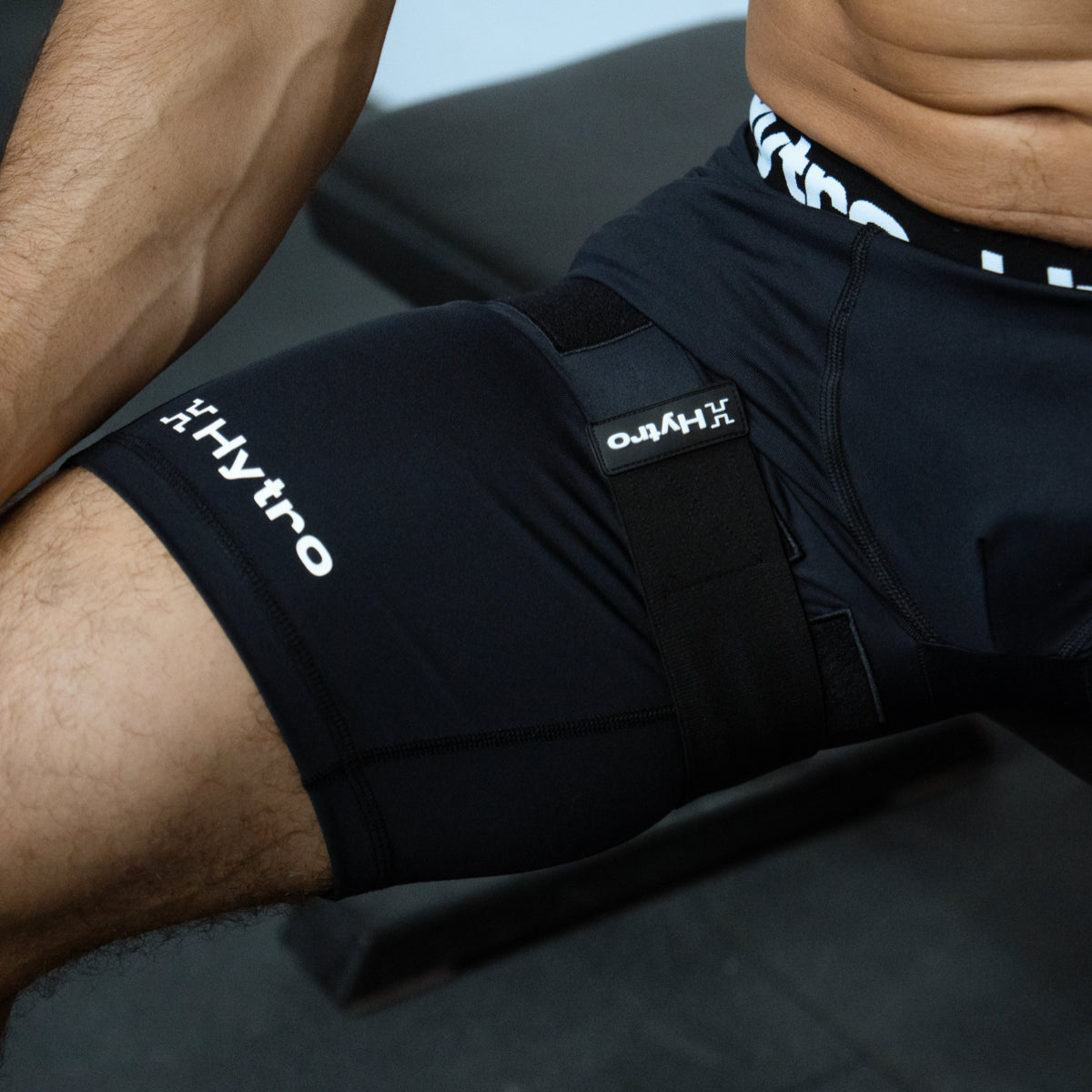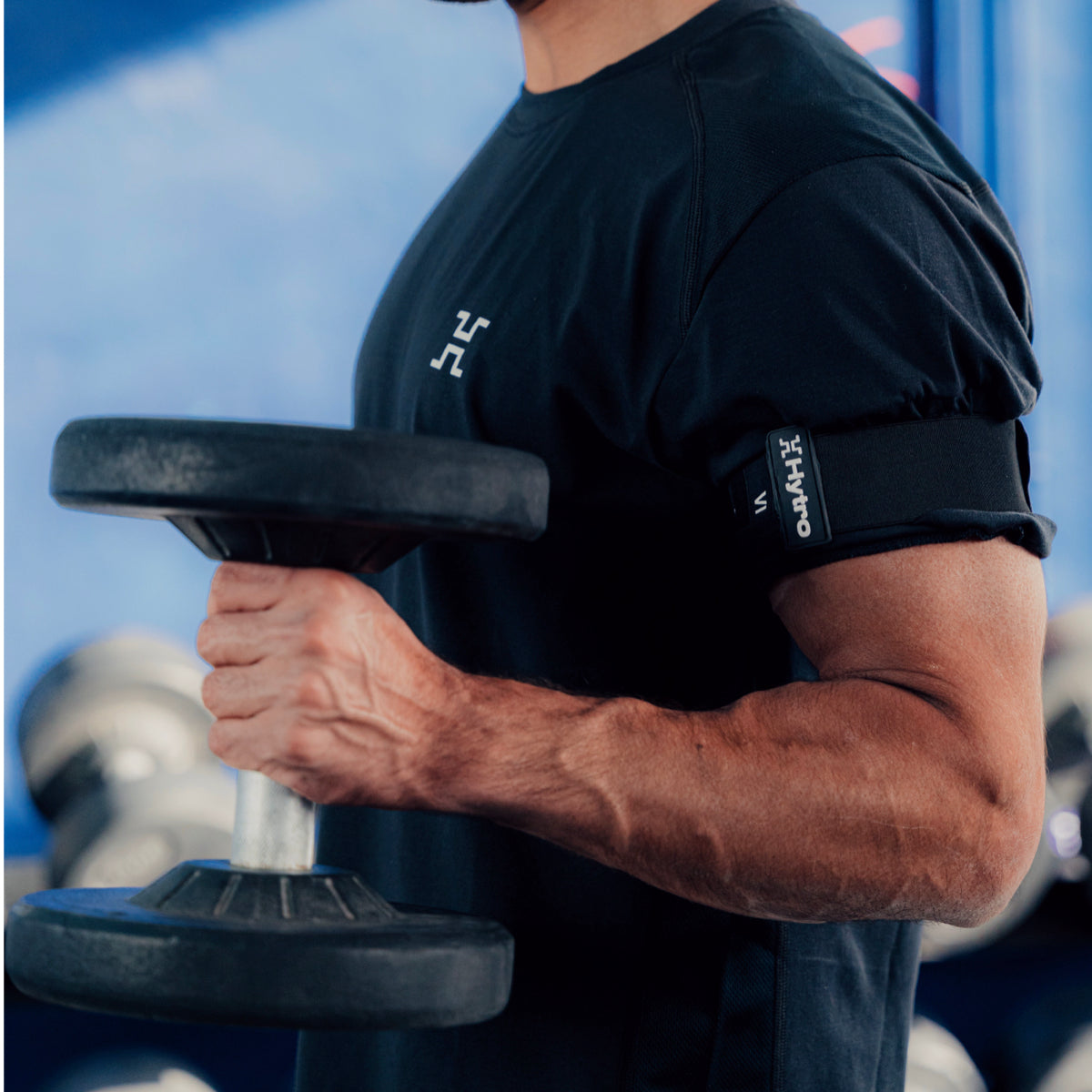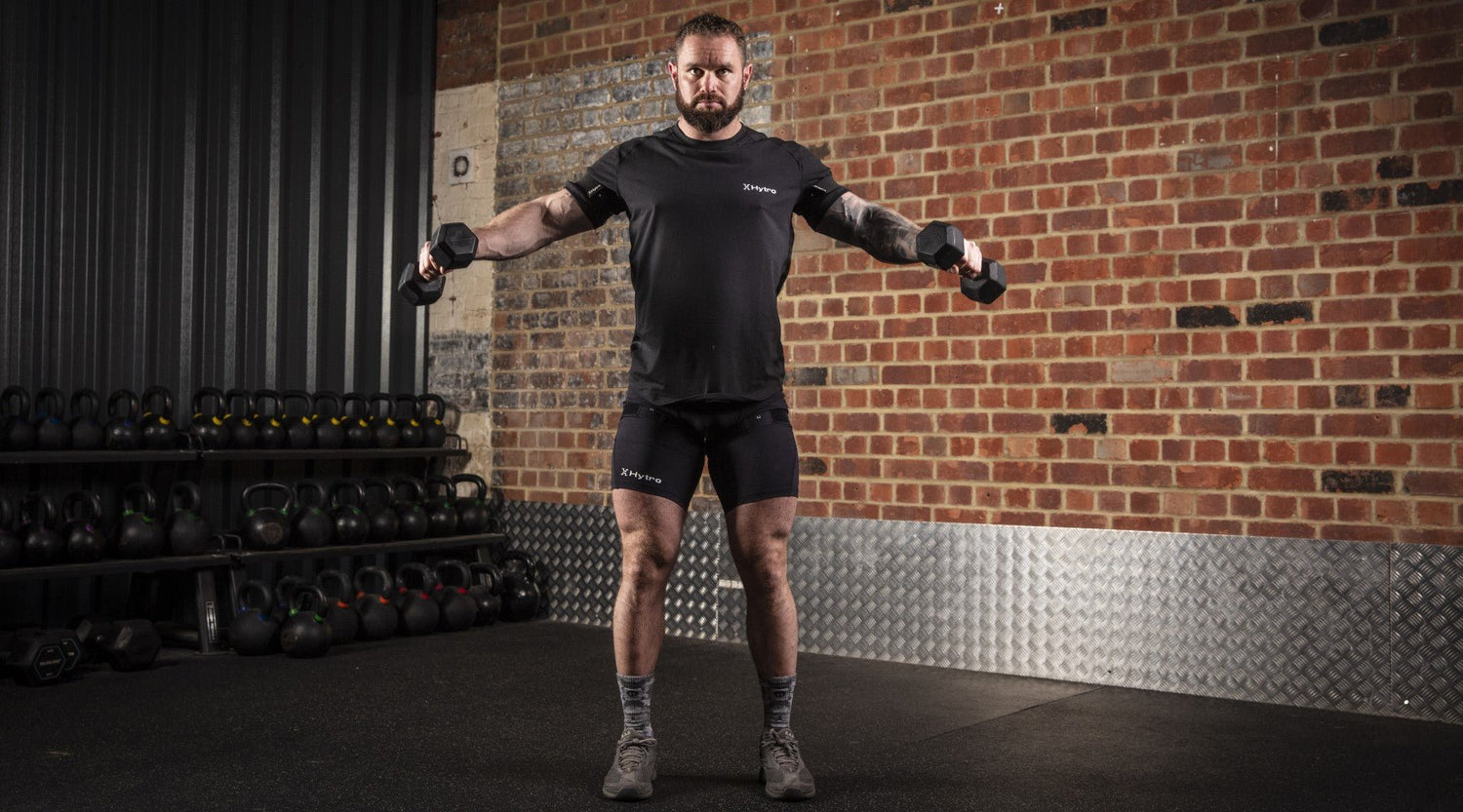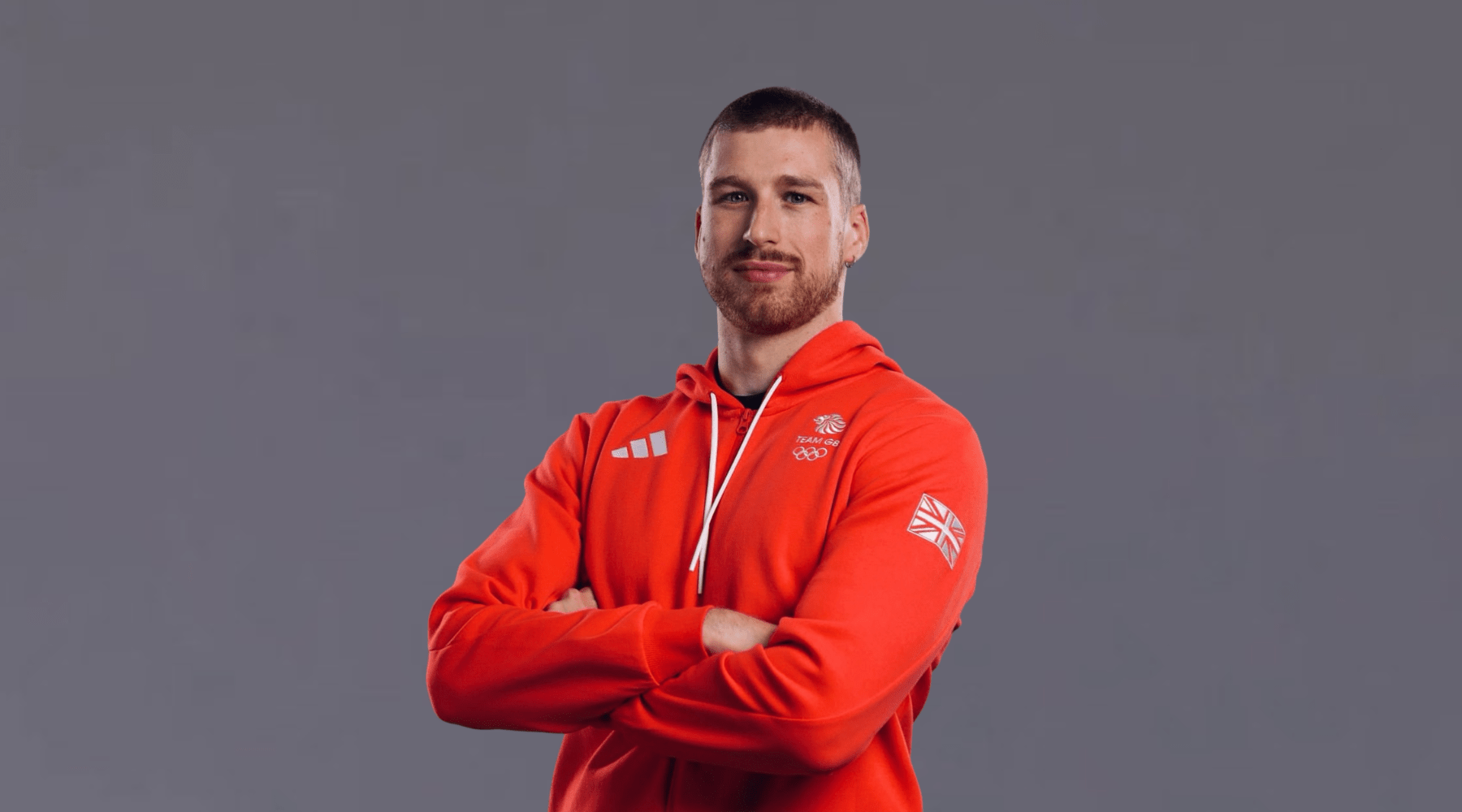Blood Flow Restriction (BFR) has been a popular tool used by pro sport athletes and coaches to support rehabilitation for many years. More recently, the emergence of Performance BFR has enabled wider application of BFR enabling increased performance for athletes across a multitude of sports. Performance BFR includes a wide range of applications, from Preparation BFR, used pre-exercise, to BFR Training, to boost strength and conditioning programmes, to Recovery BFR, expediting recovery after exercise.
The benefits of BFR were originally proven within rehab but have since been widely adopted for recovery. It’s adoption into training programmes followed on due to its ability to provide a squad-wide, unsupervised BFR solution that maximises the effects of training, offering users equivalent performance gains in half the time, or extract additional gains from the same length of session. The flexibility and versatility offered by BFR wearables means the benefits of BFR are available to anyone, anywhere – meaning it is now a vital tool in any kit bag.

So, what is BFR Training?
BFR Training allows athletes to lift light weights, use their own body weight, or do gentle cardio while using BFR, making muscles work as if they were undergoing a more intense workout. This results in muscle strengthening and fitness improvements comparable to those achieved through heavy exercise. As your muscles swell with blood, they use more muscle fibres to perform exercise, and you grow more blood vessels, all leading to stronger and bigger muscles. Impressively, BFR Training can be performed ahead of competition or big events without the usual fatigue associated with heavy exercise, making it easier to recover and compete.
How does BFR Training work?
Blood Flow Restriction, or BFR, occurs when you tighten a strap around the top of your arms or legs trapping blood in the muscles. As the muscles fill with deoxygenated blood, and light exercise or recovery routines are performed, the muscles are forced to work harder making easy exercises and recovery routines feel tougher. Your body then adapts faster and better, improving your strength, endurance and speeding up your recovery.
Including BFR into your training means you will benefit from an increase in muscle size sooner than you would without BFR, whilst also improving muscular endurance, together resulting in greater levels of fitness and exercise performance. In addition, for those competing, you can access these benefits without making it harder to recover so you can boost your performance ahead of a big event.

BFR Training is also an option for those recovering from an injury or surgery as it allows you to train with intensity under lower (or no) loads during your recovery. BFR Training allows you to build strength and muscle mass quickly, without putting the joints or injury under strain, and ultimately return to full training and competition sooner than without BFR.
How is it used in pro sports?
BFR Training is used in pro sports for several key reasons, all centred around enhancing athletic performance, improving recovery, and accelerating rehabilitation. Pro athletes utilise BFR Training to maximise workout efficiency and effectiveness. For example, British No. 1 tennis player Cam Norrie incorporates BFR to optimise his training time, extracting more from his workout, while performance coach John Noonan employs BFR when equipment is limited, or time is constrained.
Cam Norrie, British No. 1 tennis player, utilises the benefits of Hytro to maximise his workouts. By adding Hytro, Cam has been able to get more from his usual workouts to boost his fitness and strength, amplifying the gains to chase that competitive edge that enables him to outwork his opposition.

In Formula 1, John Noonan, Performance Coach to Yuki Tsunoda has used Hytro BFR as a tool to optimise training time. With the gruelling schedule presented to a driver and his coach with top-tier motor racing, Hytro BFR offers an effective time-saving solution. John confirms that when time is tight, the same workout result can be attained but with less time using Hytro BFR Performance Shorts – when equipment is lacking/ time is tight
In cycling, where getting strong is essential to success, BFR is an integral part of training. Joe Truman, Great British Cyclist has been using Hytro BFR as a finisher at the end of a strength session to maximise his gains, particularly within the legs, to enable that instrumental peak power ahead of the Olympics in Paris.
How do you perform BFR Training?
Incorporating BFR Training is simple and can reduce your time spent working out or maximise your results of your existing session. There are two key ways to carry out BFR Training, one focusing on strength and muscle growth, the other on endurance.
To boost strength and build muscle, after your regular strength workout, put on your Hytro BFR Performance Shorts or Training Tee, strap in and perform reps at 30% of your 1 rep max (or body weight). For each exercise, we suggest performing 4 sets of 20 repetitions, giving yourself 30 seconds rest between sets, and staying strapped in the entire time. Take 2 minutes unstrapped rest between exercises and perform no more than 25 minutes of BFR per session.

BFR can also help improve your endurance faster than just regular cardio. Strap into your Hytro BFR wearables as tight as possible and do 3 sets of 5 minutes of medium intensity exercise, like biking, rowing, or jogging on a treadmill, at about 50% of your usual effort (with BFR, this will feel a lot harder). Rest for 1-2 minutes between sets but stay strapped in the whole time. If it feels too hard at first, you can take the straps off between sets until your body gets used to it.

Hytro BFR wearables mean you can perform BFR anywhere with light weights or even just body weight. Its versatility means it can be used in the gym, at home, or while traveling. Proven to be safe by science (Dhokia et al, 2022; Neal et al., 2023) and offering significant benefits like enhanced muscle hypertrophy and strength, improved endurance, quicker recovery, accelerated rehabilitation, injury prevention, and ultimately, providing a versatile and convenient training option.
Discover more about the transformative potential of Performance BFR and how it can fit into your preparation, training and recovery routines.






Leave a comment
This site is protected by hCaptcha and the hCaptcha Privacy Policy and Terms of Service apply.